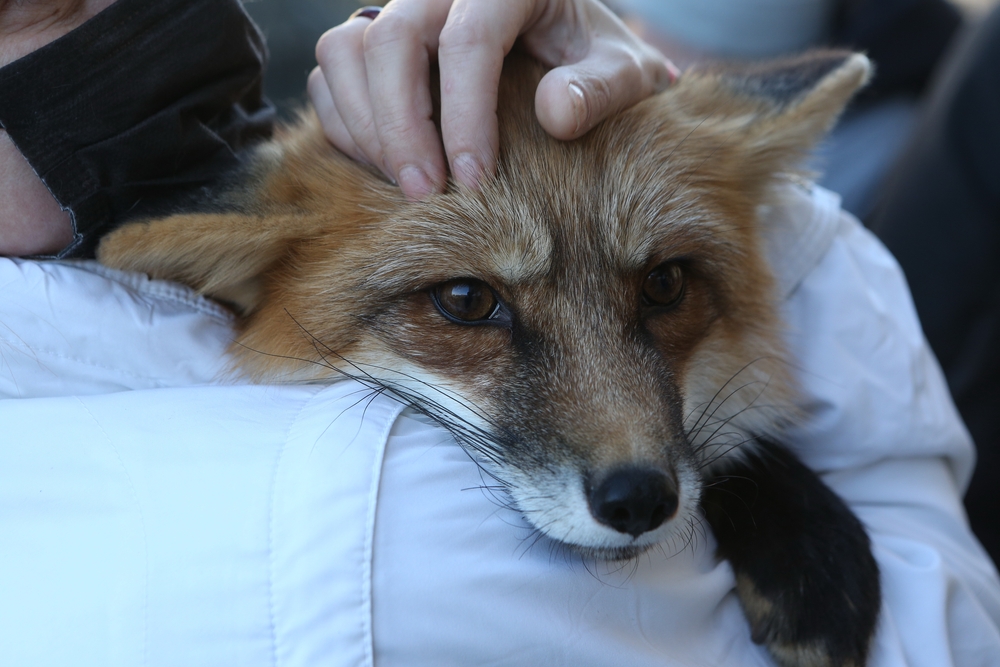Why These 6 Animals Shouldn’t Be Domesticated
Posted on Categories Discover Magazine

Man has been domesticating animals for more than 15,000 years. Dogs are likely the first, followed by sheep, pigs, goats, and horses. The widely accepted criteria of “domesticated” include genetic differences from their ancestors, dependence on humans for food, and being unlikely or unable to breed with their wild counterparts.
Although some people keep wild and exotic animals as pets, it’s not recommended. Here are six animals that people shouldn’t domesticate.
1. Can Raccoons Be Domesticated?
(Credit: Agnieszka Bacal/Shutterstock)
No, raccoons aren’t social creatures and don’t generally belong to a community. They require a large area and should never be kept in cages. In the wild, they roam and explore, which they can’t do when confined.
Are Raccoons Good Pets?
Although they can bond with humans when raised from a baby, they are quick to bite if they are stressed or scared — making them a poor choice for a pet. And they’re nocturnal, leading to sleepless nights for their owner. In nature, they use their sharp claws for climbing. Those claws, along with their sharp teeth, will damage the property.
Read More: Docile Raccoons Are Better Dumpster Divers and More Fit for Cities
2. Can Foxes Be Domesticated?
(Credit: Sergey Bezgodov/Shutterstock)
Although foxes can be trained, this shouldn’t be confused with domestication. Unlike dogs, foxes haven’t lived alongside humans for thousands of years. Of the four species of foxes found in the United States: arctic, gray, kit, and red, none are considered domesticated.
Do Foxes Make Good Pets?
As solitary animals, foxes aren’t suited for life as a family pet. They need to be in a habitat where they can seek out their own food. As crepuscular animals, they normally do their foraging and hunting at dawn and dusk. They also carry the risk of spreading disease to humans. These include mange, leptospirosis, roundworm, and rabies.
Read More: Hybrid Animals Are Trouble, Scientists Say, No Matter How Cute They Are
3. Can Chimpanzees Be Domesticated?
(Credit: Patrick Rolands/Shutterstock)
No, chimps are wild and not meant to be domesticated. Although we share almost 99 percent of the same DNA — and are both primates, there are still 35 million differences between these animals and humans. We share similar traits, such as intelligence, the ability to solve problems, engaging in play, and experiencing and expressing various emotions.
Are Chimpanzees Good Pets?
They enjoy being held and interacting with family members — when they’re young. Once they reach adolescence and adulthood, they become increasingly strong, unpredictable, and aggressive. Regardless of how affectionate they may be, they retain their wild instincts. There have been several cases of extremely violent chimp attacks.
Read More: Cheerful Chimps: Are Animals Really Happy When They Smile?
4. Can Parrots Be Domesticated?
(Credit: Ondrej Prosicky/Shutterstock)
No, even when parrots are born in captivity, they’re not domesticated. In the wild, they spend their time flying, seeking food, establishing nesting areas, socializing, bathing, and mating. They are highly social animals that live and travel in large flocks, communicating with each other through vocalization and body language.
Do Parrots Make Good Pets?
Because parrots are not solitary, they are ill-suited for keeping as pets. They require large amounts of interaction and often experience separation anxiety when their owner is away. When a parrot is highly stressed, they can become agitated, depressed, and even scream loudly. It can result in self-harm, where they pull out their own feathers.
Read More: Parrots Live in New York City. Here’s How They Make It in the Urban Jungle
5. Can Capybaras Be Domesticated?
(Credit: tarake/Shutterstock)
Social and friendly, capybaras live in groups of up to 14 members — where they communicate through a multitude of sounds. Capybaras shouldnt be dometicated because their bonds with others in the group are integral to their well-being.
At over 100 pounds, the capybara is the world’s largest rodent. Native to South America, they live in semi-aquatic environments.
Do Capybaras Make Good Pets?
Their tame and sweet nature might make them appealing as pets, but their needs usually can’t be properly met when they’re not in the wild. They require access to a thermally regulated pool and must eat between six and eight pounds of grass daily. Most of all, they need the companionship of another capybara.
Read More: 5 Weird and Wild Animals You’ve (Probably) Never Heard Of
6. Can Sugar Gliders Be Domesticated?
(Credit: I Wayan Sumatika/Shutterstock)
Despite being able to bond with certain people, sugar gliders haven’t evolved with humans — and are still wild animals. These cute and furry marsupials require a large area — since they can glide half the length of a football field. They live in colonies when in the wild and use vocalization and olfactory communication to interact with each other.
Do Sugar Gliders Make Good Pets?
The companionship humans can offer is not a viable substitute for what they experience in the wild. When a sugar glider is kept alone, they will experience detrimental effects, which can lead to depression and self-harm. Additionally, pet food will not suffice, as they need to eat food sources they find in the wild, such as eucalyptus and insects.
Read More: 20 Things You Didn’t Know About … Animal Domestication